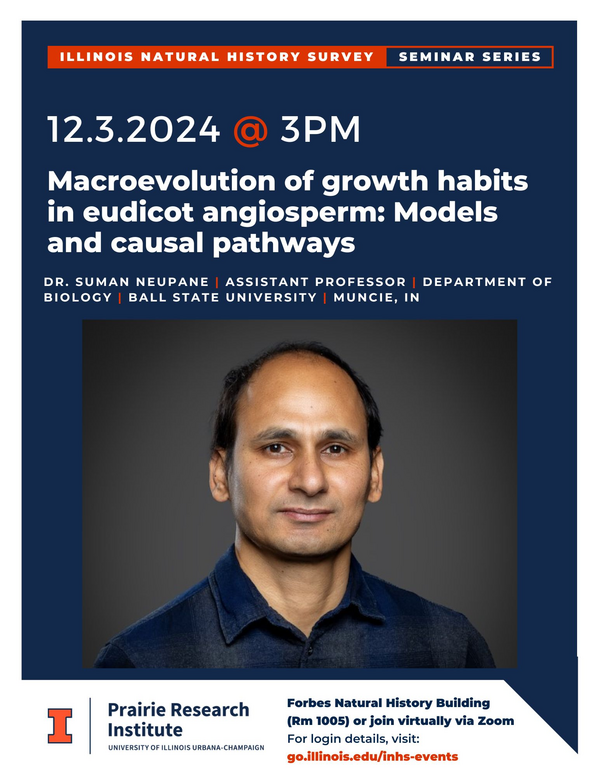INHS Seminar | Macroevolution of growth habits in eudicot angiosperm: Models and causal pathways

- Sponsor
- Illinois Natural History Survey Seminar Committee
- Speaker
- Dr. Suman Neupane, Assistant Professor, Department of Biology, Ball State University, Muncie, Indian
- Contact
- Suneeti Jog
- jog@illinois.edu
- Views
- 120
- Originating Calendar
- INHS Events
This seminar will be held in room 1005 Forbes Natural History Building, 1816 S Oak Street, Champaign or you may join virtually on at https://illinois.zoom.us/j/82517618634?pwd=X5pzZvwfKYdxGhbrWMP2EP1O7RCjpa.1 | Meeting ID: 825 1761 8634 | Password: 818710
Abstract: Phylogenetic comparative methods (PCMs) have been useful in identifying and predicting evolutionary patterns of various traits. However, the complexity of biological systems often exceeds the assumptions of these models. To address this, recent improvements to PCMs have focused on adding more parameters and variables to the model to better capture the complexity of trait relationships and interactions. However, this added complexity can sometimes be misleading and disconnected from the actual causal patterns of the traits being studied. In this study, we examine the evolution of eudicot (75% of all angiosperms) growth habits and investigate how other variables, such as vessel size, leaf phenology, and minimum temperature, may impact our inferences. We compare the predictability of different approaches for understanding the evolution of woodiness, a discretized trait with a continuum of underlying variability. We also show that this trait may be linked to other measured and unmeasured traits and environmental variables
.Further, we demonstrate how this information can be used in estimating unknown traits. Through the use of causal path diagrams, we demonstrate the interconnectedness of these traits and variables and the need for a comprehensive approach to modeling trait evolution that incorporates natural history knowledge and its interconnected traits and variables.